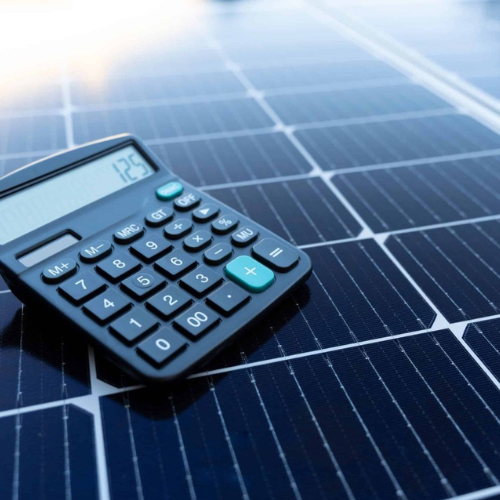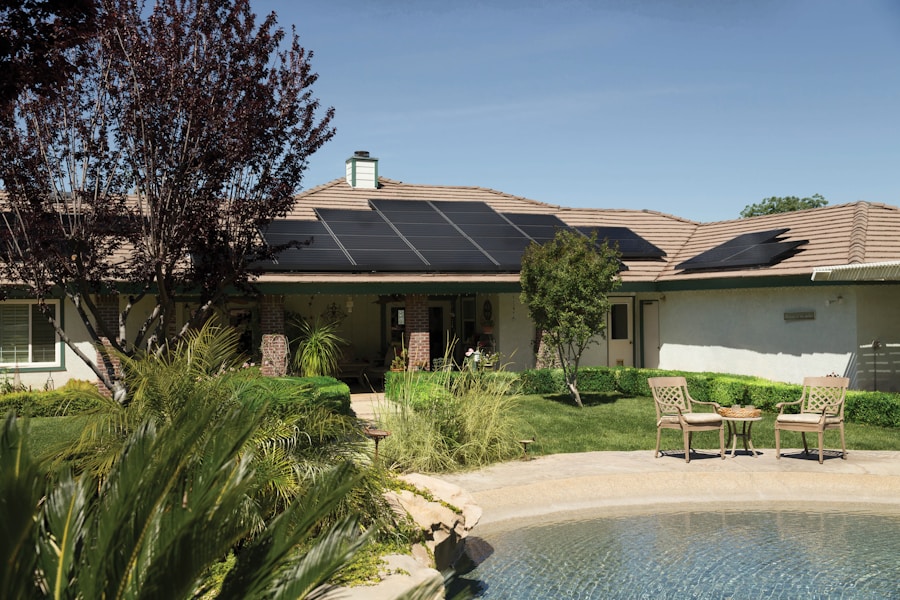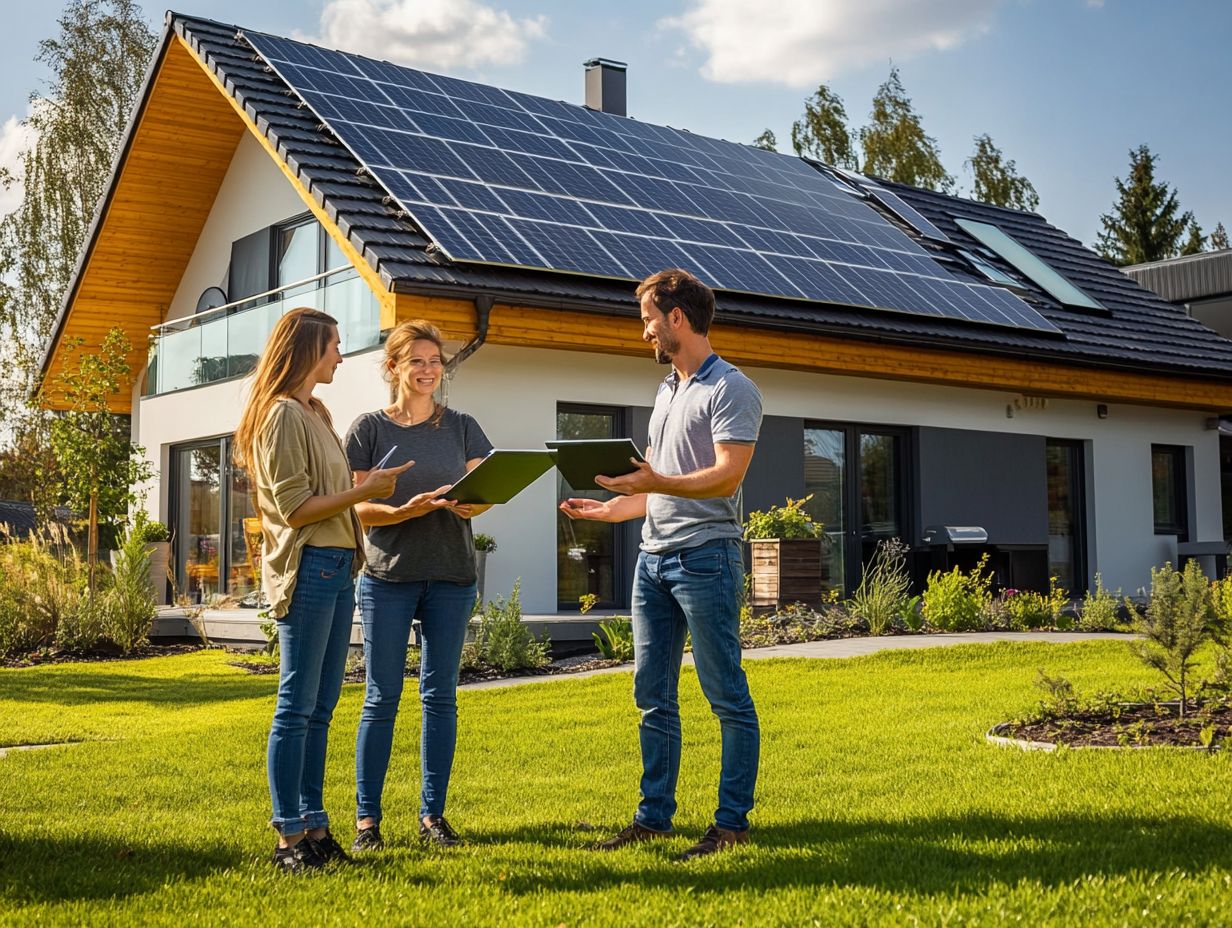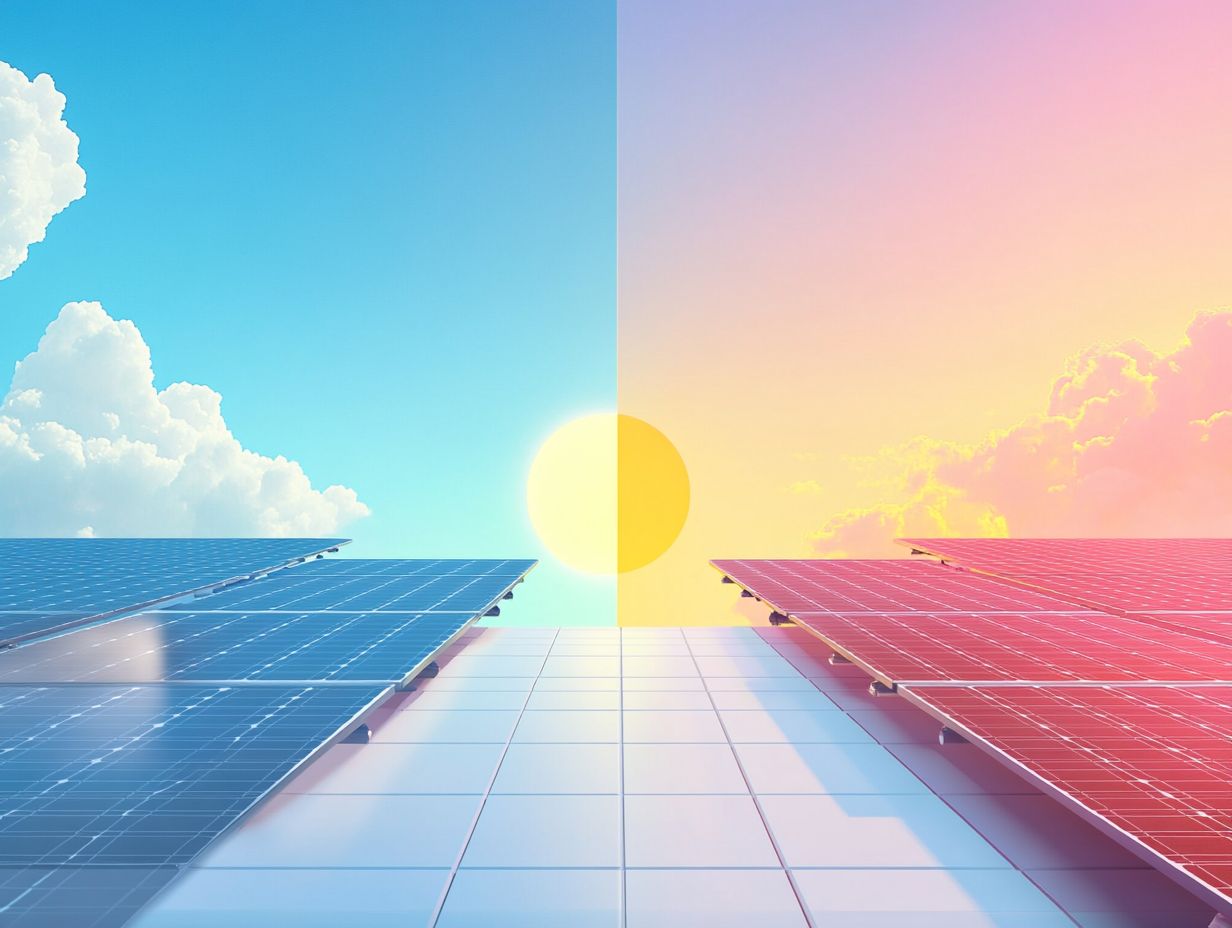Contents
- 1 Common Issues Affecting Solar Panel Performance
- 2 Overheating of Solar Panels
- 3 Inverter Failure
- 4 Poor Performance of Solar Panels
- 5 Maintenance and Care for Solar Panels
- 6 Frequently Asked Questions About Solar Panels
- 6.1 What are some common solar panel issues that may require electrical troubleshooting and inverter replacement?
- 6.2 How can I troubleshoot low power output and performance degradation from my solar panels?
- 6.3 What should I do if my solar panels are damaged and experiencing efficiency loss?
- 6.4 Why are my solar panels not producing any power or showing a decrease in energy yield?
- 6.5 What can I do if I’m experiencing issues with my solar panel’s inverter or micro-inverters?
- 6.6 How can I prevent common solar panel issues and ensure optimal system performance?
Understanding Solar Panels and Their Environmental Impact
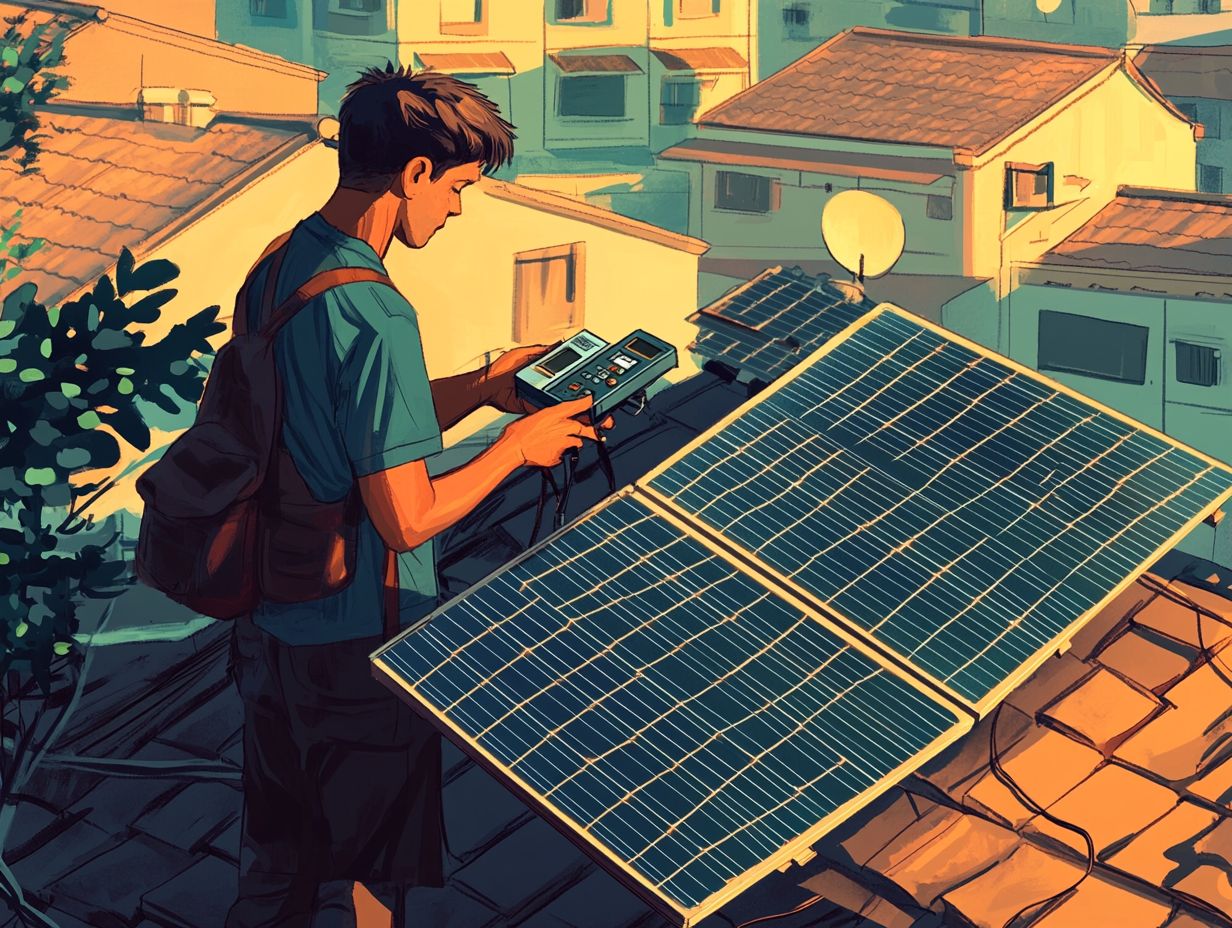
Solar panels, or photovoltaic cells if you’re feeling fancy, are pretty amazing devices that turn sunlight into usable electricity. They really make a difference in the renewable energy solutions we rely on today, promoting grid independence and reducing power outages.
Not only do they help you cut down on those pesky electricity bills, but they also play a big role in protecting the environment by reducing carbon emissions and promoting energy independence.
There are different types of solar panels to choose from, like monocrystalline and polycrystalline, which cater to different energy needs and efficiency ratings.
Additionally, components like solar arrays and microinverters can really amp up your system’s performance and reliability. Solar arrays are designed to soak up as much sunlight as possible, making your energy production more efficient and enhancing solar panel lifespan.
Microinverters take it a step further by letting each panel work independently, so that shading or dirt doesn’t mess with your output, and they assist in effective fault detection.
When you set up a well-designed solar energy system, you’re not just boosting your energy efficiency—you’re also ensuring long-term sustainability.
That’s why careful planning and installation, avoiding common installation errors, are crucial when you’re making the switch to solar power.
Common Issues Affecting Solar Panel Performance
Even though solar panels are built to be efficient and reliable, you might run into some common issues that could impact their performance and lifespan, like performance drops, inverter problems, or electrical connections issues.
By understanding these issues, you can troubleshoot effectively and keep your solar energy system running at its best.
Jordan, D. C., & Kurtz, S. R. (2013). Photovoltaic degradation rates—an analytical review. Progress in Photovoltaics: Research and Applications, 21(1), 12-29. Link
Identifying and Understanding Common Solar Panel Problems
Understanding the common problems that can pop up with solar panels is key to keeping your system reliable and efficient, ensuring optimal energy yield.
You might encounter issues like overheating, inverter failures, shading effects, dirty panels, and wiring issues, all of which can cause your performance to drop and efficiency to take a hit.
Each of these problems not only affects your energy production but could also shorten the lifespan of your solar system.
For instance, overheating can happen if there’s not enough ventilation or if the installation wasn’t done right, leading to stress on the components, system inefficiencies, and eventually failure.
Inverter failures can also sneak up on you, often triggered by electrical surges or just wear and tear over time, so you’ll want to tackle those quickly to get things back on track.
Shading effects from trees or nearby buildings can really dim your solar output and affect system efficiency since panels thrive on direct sunlight. And don’t forget about dirty panels—the dust and debris can block sunlight and lower your efficiency.
To spot and fix these issues effectively, using performance monitoring and diagnostic tools is super helpful for maintaining solar system health. They give you real-time data about your energy output and system health.
Plus, having a solid troubleshooting guide can help you systematically tackle any challenges that arise, ensuring your solar energy system performs at its best and lasts as long as possible.
Overheating of Solar Panels
Overheating of solar panels is a serious issue that can really impact the performance of your solar energy system.
If your panels get too hot, it can lead to a significant drop in energy yield and efficiency.
Factors like high temperatures and poor ventilation can make this problem worse, so it’s important to pay attention and take action to keep everything running optimally.
Causes and Solutions
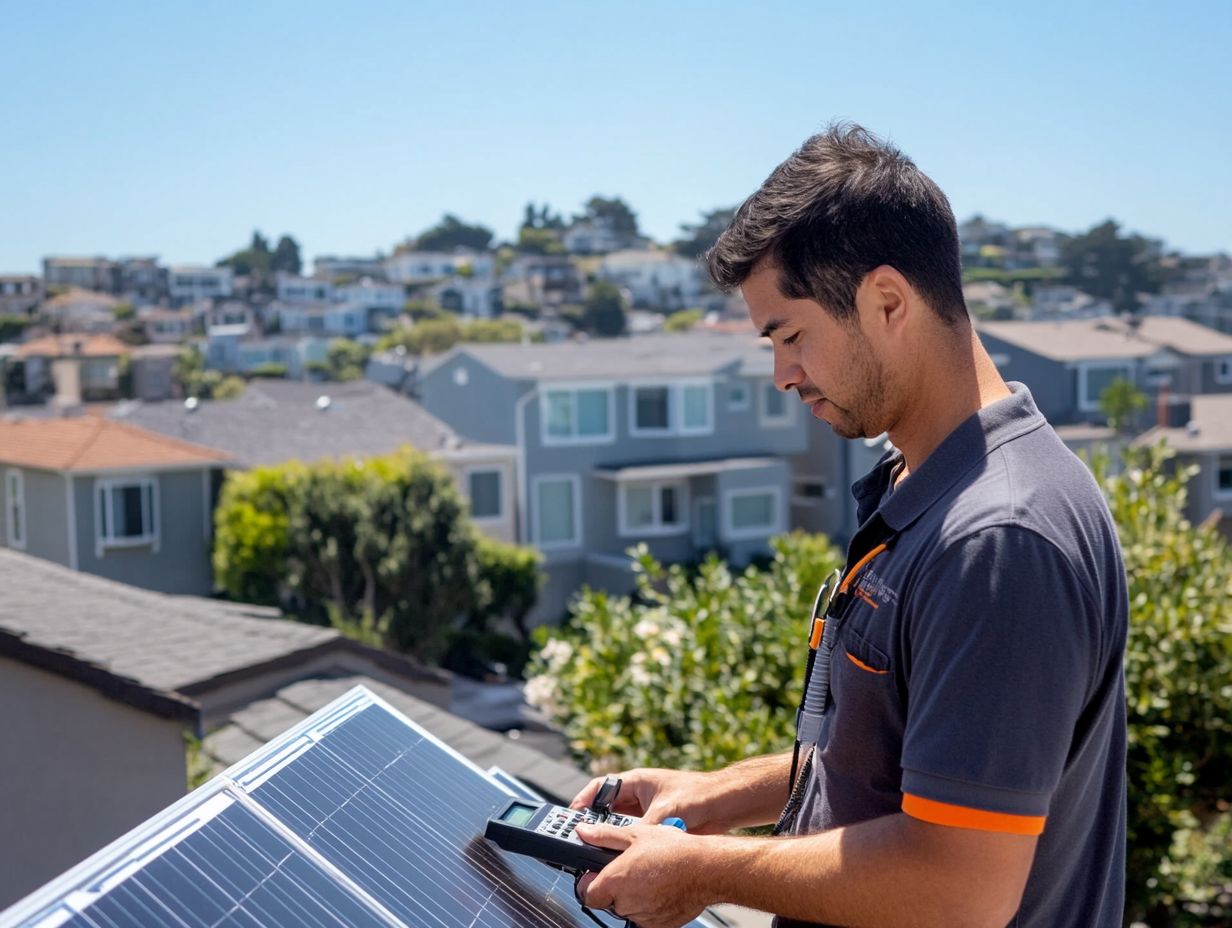
Regular checks can help prevent these issues.
Identifying the causes of overheating in solar panels and implementing effective solutions is crucial for keeping your panels running efficiently and lasting longer.
Common causes include improper installation, environmental factors, and insufficient maintenance, but don’t worry—there are practical fixes for these issues.
Establishing a routine maintenance schedule is key to maintaining both soil health and panel performance. By regularly inspecting your components, making necessary adjustments, and cleaning surfaces to prevent debris accumulation, you can significantly reduce the risk of overheating.
Consider evaluating potential upgrades like more efficient cooling systems or higher-output panels to mitigate heat effects. These can really boost your system’s performance and lifespan.
Plus, utilizing monitoring systems lets you track temperature fluctuations in real time, so you can jump on any issues as soon as they arise.
By combining these strategies, including solar tracking for optimal solar irradiance, you can create a solid plan to prevent overheating, ensuring that your solar investment operates at peak efficiency for years to come.
Inverter Failure
Inverter failure is a major concern for anyone with a solar energy system since the inverter is what converts the DC electricity from your solar panels into AC electricity for your home.
It is crucial to troubleshoot any inverter issues quickly to keep that energy output steady and to avoid those costly repairs down the line, reducing repair costs.
Identifying and Addressing Inverter Issues
Identifying and addressing inverter issues quickly can save you from prolonged energy losses and costly repairs, ensuring that your solar panels run at their best.
Common problems you might encounter include fault detection failures and communication errors, but don’t worry—effective monitoring systems and regular professional inspections can usually resolve these.
By using advanced diagnostic tools, like performance monitoring software, you can easily keep an eye on the output and efficiency of your inverters in real-time.
Implementing these systems helps you spot any irregularities that might indicate potential faults early on, allowing for timely fixes.
Routine professional assessments and energy audits are key to keeping your inverters healthy. Certified technicians have the know-how to identify deeper issues that might not show up during regular monitoring.
Best practices include setting alerts for any performance deviations and scheduling annual maintenance checks—doing this can significantly boost the longevity and reliability of your entire solar energy system.
Poor Performance of Solar Panels
If your solar panels aren’t performing well, it can really take a toll on your energy production and overall return on your solar investment. That’s why it’s super important for you to understand what might be causing the issues.
Things like environmental factors, panel degradation, and wiring problems can all contribute to a drop in efficiency. Regularly analyzing their performance is key to keeping everything running smoothly.
Possible Causes and Solutions
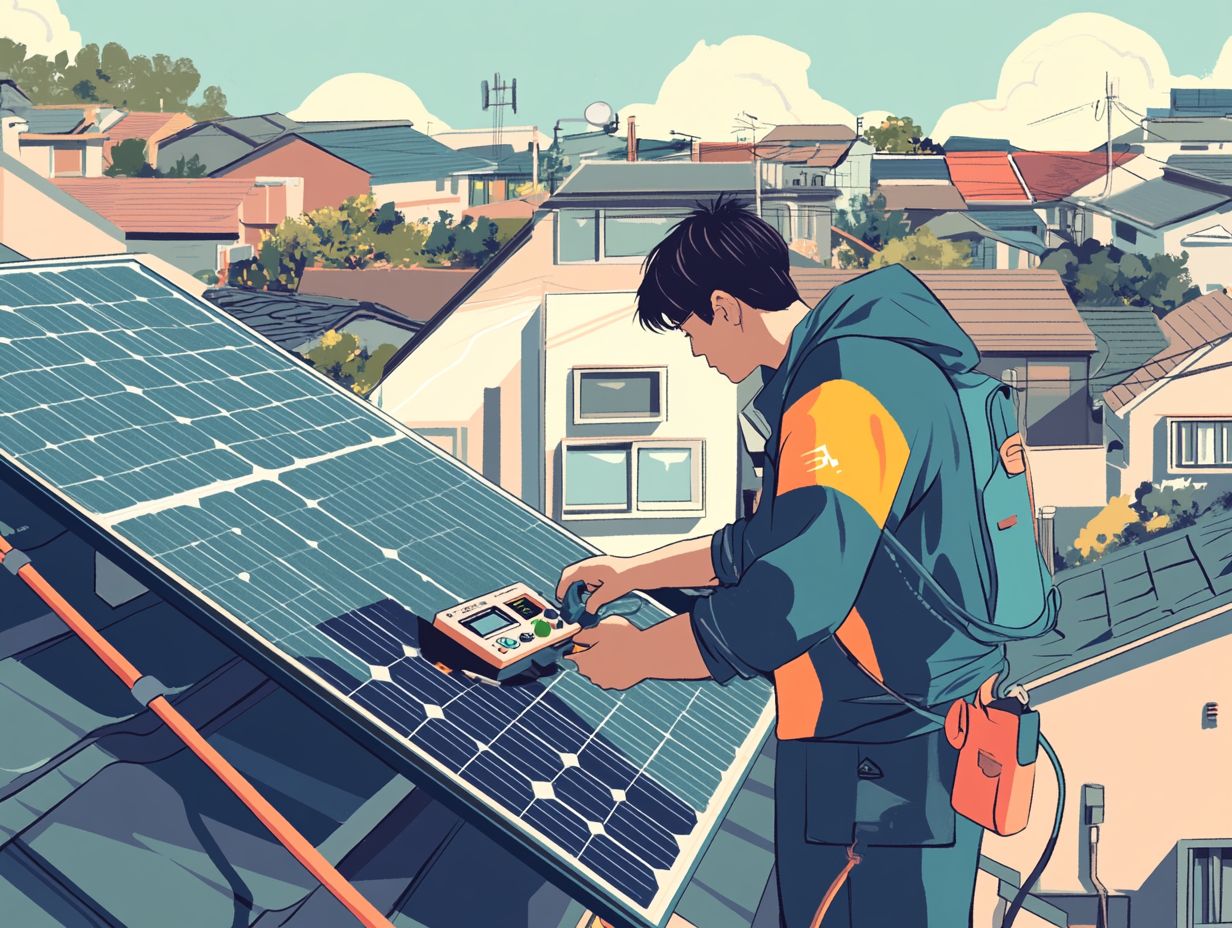
There are a few reasons your solar panels might be underperforming, and it’s good to know what they are. Factors such as shading and dirt accumulation can significantly hinder energy production.
By understanding these causes, you can take some smart steps, including electrical troubleshooting, to make sure your solar energy system is running at its best.
Let’s talk about shading first. If you’ve got trees, buildings, or any other objects blocking sunlight from hitting your panels, even just a little shading can cause a big drop in energy output and efficiency.
That’s because when one solar cell is shaded, it can affect the performance of the whole array.
Then there’s dirt and debris accumulation. If your panels are covered in grime, they won’t absorb sunlight as effectively. Regular cleaning is essential; use a soft brush and a hose, and try to do it during the cooler parts of the day to avoid streaking.
Additionally, consider the orientation and tilt angle of your panels. It’s best if your panels face true south (if you’re in the northern hemisphere) at about a 30-degree angle. This way, you’ll maximize solar exposure all year round.
Taking these steps not only boosts your panels’ performance but also helps extend the lifespan of your solar system, ensuring reliable energy consumption.
Maintenance and Care for Solar Panels
Regular maintenance and care for your solar panels are essential to ensure the smooth and efficient operation of your solar energy system.
Sticking to a structured maintenance schedule and using effective cleaning methods can help you avoid common issues, prevent performance degradation, and maximize energy production over time.
National Renewable Energy Laboratory (NREL). (2015). Best Practices in PV System Installation. Link
Frequently Asked Questions About Solar Panels
What are some common solar panel issues that may require electrical troubleshooting and inverter replacement?
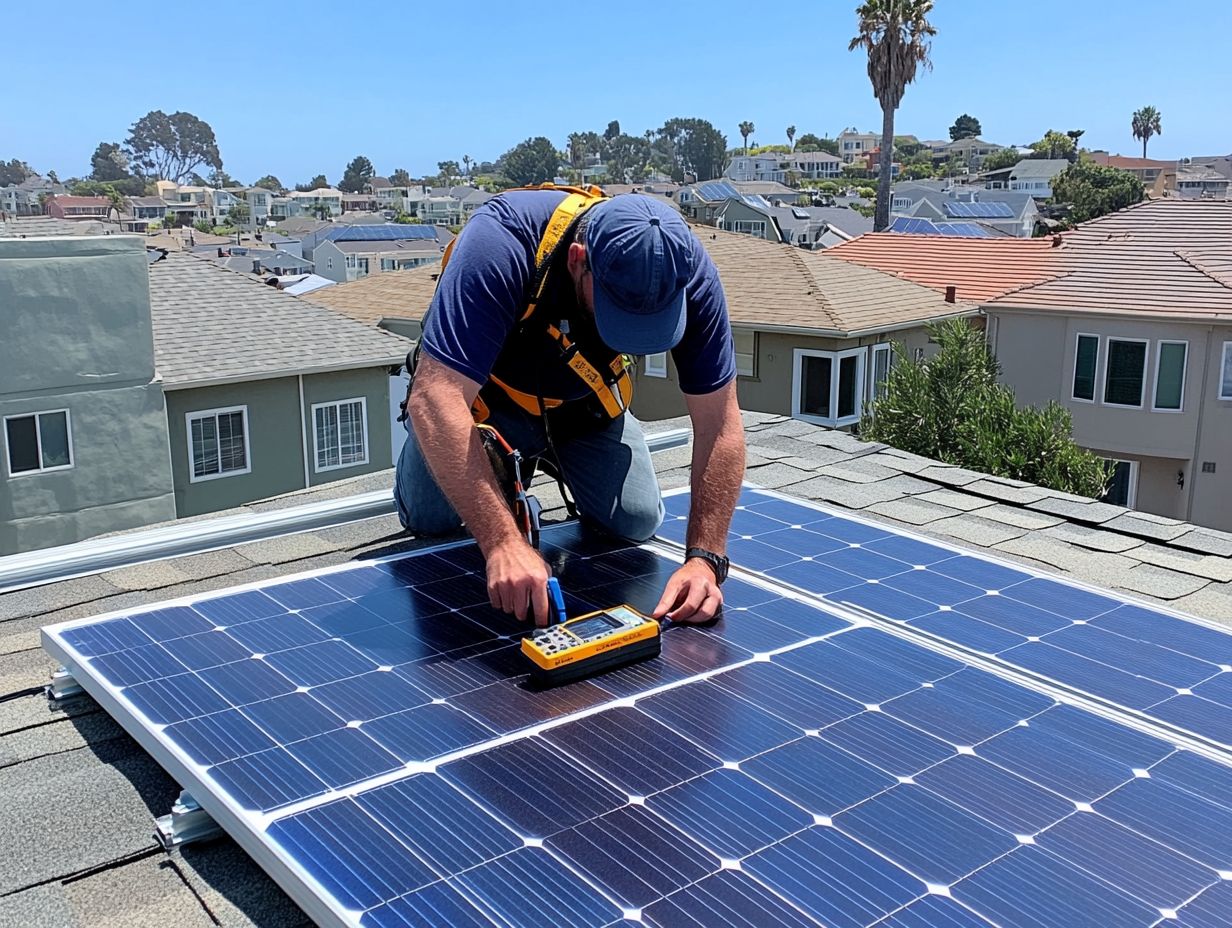
Common solar panel issues that may require troubleshooting include low power output, damaged panels, faulty connections, inverter problems, and issues with the inverter’s electrical connections.
How can I troubleshoot low power output and performance degradation from my solar panels?
To troubleshoot low power output, you should first check for shading or debris blocking sunlight from reaching the panels. You should also inspect the panels for any visible damage or dirt buildup that may be affecting their efficiency.
If everything appears to be in working order, it may be an issue with the wiring or inverter, or possibly the solar array’s energy output, and you should contact a professional for further assistance.
What should I do if my solar panels are damaged and experiencing efficiency loss?
If your solar panels are damaged, you should first turn off the system and avoid touching any exposed wiring. Then, contact a professional to assess the damage, perform electrical troubleshooting, and make any necessary repairs or replacements.
Attempting to fix the panels yourself can be dangerous and may void any warranties and renewable incentives you might have. It is crucial to prioritize safety and proper procedures.
Why are my solar panels not producing any power or showing a decrease in energy yield?
There are several potential reasons for solar panels not producing power, including a malfunctioning inverter, a tripped circuit breaker, module failure, or a problem with the wiring.
You should first check your inverter and circuit breaker to see if they need to be reset or replaced. If the issue persists, it may be necessary to call a professional for further electrical troubleshooting and diagnostics.
What can I do if I’m experiencing issues with my solar panel’s inverter or micro-inverters?
If you’re experiencing issues with your inverter, you should first check to see if the display is showing any error messages. If so, consult the manufacturer’s manual for troubleshooting tips.
If there are no error messages, it may be a faulty connection or internal issue with the inverter, in which case you should contact a professional for assistance. In some cases, you might need inverter replacement or even a system performance upgrade.
How can I prevent common solar panel issues and ensure optimal system performance?
The best way to prevent common solar panel issues is to regularly inspect and maintain your system. This includes keeping the panels clean, checking for any damage or obstructions, monitoring systems for performance issues, and ensuring all connections are secure.
It’s also important to have your system professionally installed to avoid installation errors and to follow any maintenance guidelines provided by the manufacturer. Regular maintenance practices can help optimize system efficiency and prolong the solar panel’s lifespan.


